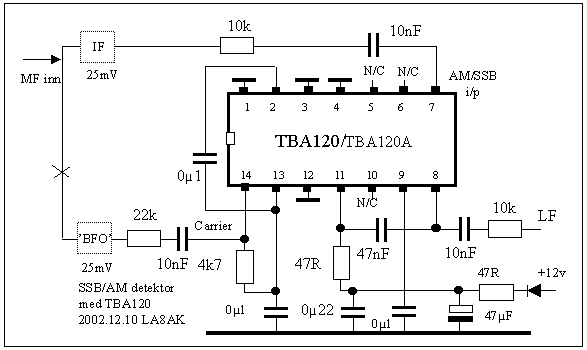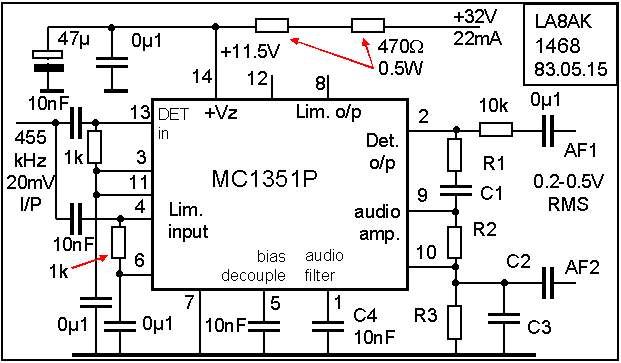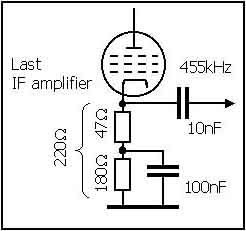
g41. Quasi-synchronous AM-detectors

TBA120 as AM demodulator.
Equivalents are SN76660N (TI), TBA120A and S041P (the latter is a
low power version). It is in fact a CW/SSB/AM-multimode-detector,
but the BFO line is connected to the signal from the IF. Believe
I tested it in my Drake R-4C, and it is
also tested by Carl-Gustav SM6HYG in his FRG-7 (Yaesu). Please
note that TBA120AS, TBA120S, TBA120C, TBA120D etc are different
and may not function satisfactorily in this construction. It is
also suggested the change for use as SSB detector, but it is an
old device and the circuit has more interest as a reference IF
level is supposed to be maximum 50mV RMS. MC1351
should not have more than 10-25mV input, and TDA1576
is overloaded with higher levels than 100mV RMS. NE/SA604/614
could also well be used, but have not been tested.
This is also shown on page c11
 |
 |
1) MC1351P as AM-detector for Tandberg
Huldra 9 broadcast receiver. IF level input should not exceed
25mV RMS. The 2nd audio output with built-in audio amplifier is
not used.
2) In Tandberg Huldra 9 the IF stages has a
47W resistor (*)
in series with the cathodes to ground (without decoupling
capacitor), so it is a suitable IF level across the resistor.
In other cases the existing resistor could be divided into a
smaller and larger value - as shown here. The IF gain may be
slightly reduced on the anode side of the stage, but it seems not
important, tested it with another receiver.
*) The reason for using
this arrangement is to minimize AGC influence on input
capacitance variation - particularly important for
FM-IF-amplifiers, but I use a solidstate FM-tuner. See more info
on page c11
BACK
Last update 2004.04.04